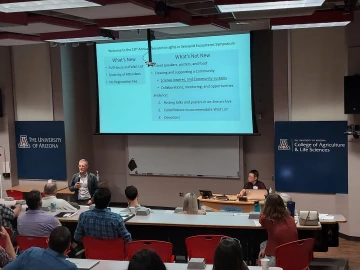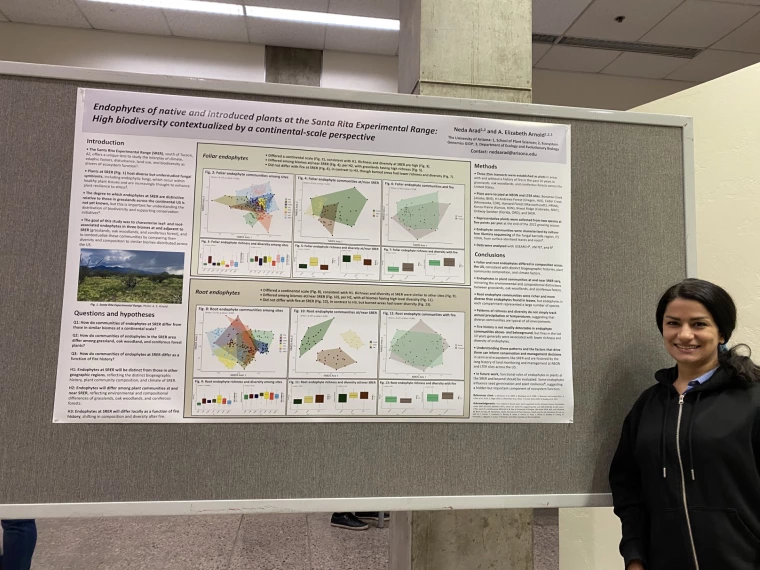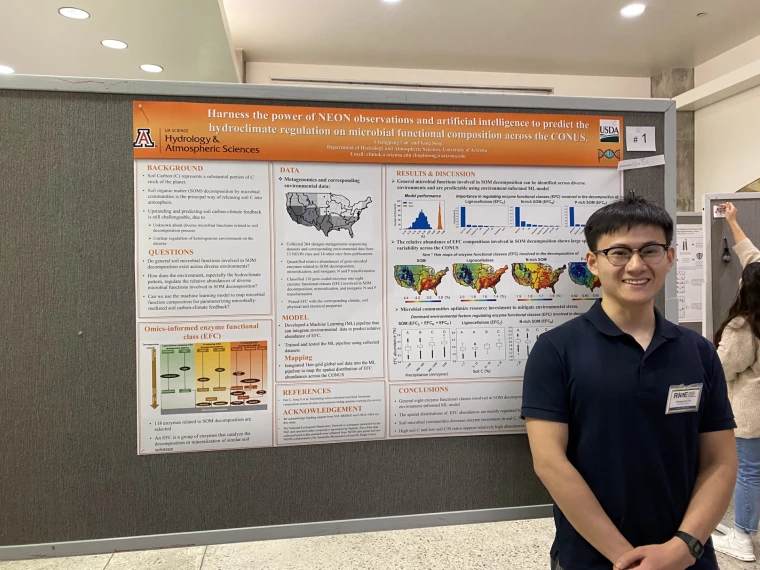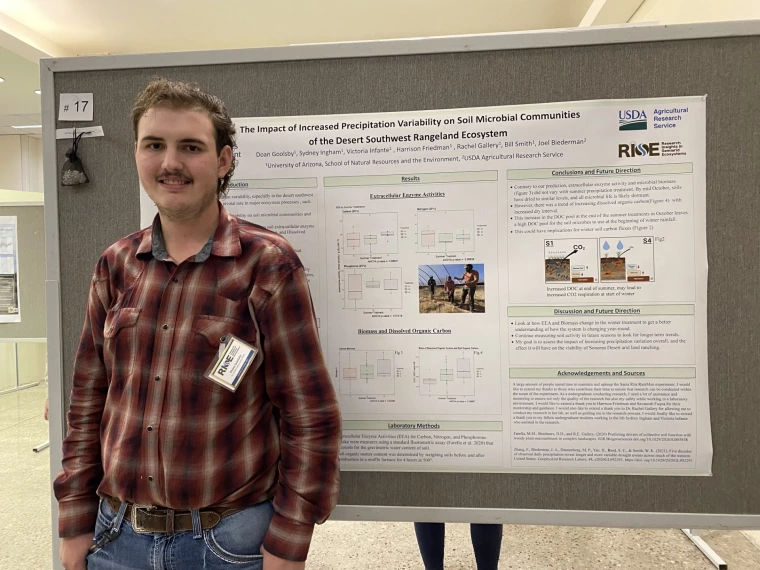
Mitch McClaran introducing the 19th RISE Symposium in the Marley building.
On Saturday 21 October 2023, sixty-four people attended the 19th Annual RISE (Research Insights in Semi-Arid Ecosystems) Symposium. You can find the program and links to the pdf version of the talks and posters presented at https://www.tucson.ars.ag.gov/rise/v2/index.html
The objectives of the symposium are to share recent results of scientific research in semiarid environments, with an emphasis on work conducted at the USDA-ARS Walnut Gulch Experimental Watershed (WGEW) and the University of Arizona Santa Rita Experimental Range (SRER), and to encourage collaboration among researchers and students on future research and outreach activities.
Nine speakers covered a wide variety of topics, and some included results of work completed and on-going at WGEW or SRER. The main theme was opportunities for research, teaching and outreach. In addition, we had 18 posters presented, including short talks by each poster author to the audience to encourage visits to the posters during lunch. We had contestants in the poster competition for graduate and undergraduate students using data collected from either WGEW or SRER.
This year we transitioned from paid registration to free registration and lunch. We sought and continue to seek donations to cover the student poster contest awards and costs associated with running the Symposium. We continue to accept donations for those purposes. To donate go to https://give.uafoundation.org/SantaRita-RISE.
Members of the Tierra Seca Club, which is the student chapter of the Society for Range Management, provided coffee, juice, fruit, cheese and baked goods for attendees before the talks began at 9 am. The Club will use donations for providing these goodies to help cover travel expenses to the national meeting of the Society for Range Management this February 2024 in Reno, NV.
The highlight of the Symposium was the 1.5-hour poster session where 18 presenters led a cacophony of discussion in the Marley Building foyer. These posters are available for viewing at http://www.tucson.ars.ag.gov/rise/index.htm.
Graduate Student Contest Winners and Photos with Posters
First place at $500, Neda Arad (School of Plant Sciences, UA) for the poster titled Endophytes of native and introduced plants at the Santa Rita Experimental Range: High biodiversity contextualized by a continental-scale context.

Neda Arad BEST Grad poster 2023
Second place at $300, Changpeng Fan (Hydrology and Atmospheric Sciences, UA) for the poster titled Harness the power of NEON observations and artificial intelligence to predict the hydroclimate regulation on microbial functional composition across the CONUS.

Changpeng Fan Honorable Graduate poster 2023
Undergraduate Student Contest Winner Photo with Poster
First place at $300, Doan Goolsby (School of Natural Resources and the Environment, UA) for the poster titled The Impact of Increased Precipitation Variability on Soil Microbial Communities of the Desert Southwest Rangeland Ecosystem.

Doan Goolsby BEST Undergrad poster 2023
Oral presentations started with updates and opportunities at the Santa Rita Experimental Range and National Ecological Observatory Network (NEON) by Brett Blum from Abe Karam, respectively. Nico Franz (School of Life Sciences, ASU) followed with an introduction to the enormous number of holdings and research opportunities using the NEON Biorepository, which is located at Arizona State University. Vanessa Prileson (Pima Co. Natural Resources) followed with an overview of lands held by Pima County in title and easement for the Sonora Desert Conservation Plan, and specifically opportunities on the ranch lands in that program. Micheal Johnson (Extension Specialist, School of Natural Resources and the Environment, UA), a 250th generation Hopi Farmer described opportunities related to agricultural food storage and cultivation practices performed by the Hopi and how those practices reduced the vulnerability to the uncertainties of inter-annual growing conditions. Joel Biederman (USDA ARS Southwest Watershed Research Center) described discoveries and opportunities following the first 3 years of the RainMan project measuring vegetation and soil microbial responses to manipulations of rainfall amount and timing on the Santa Rita.
After lunch, Phil Heilman (USDA ARS Southwest Watershed Research Center) described recent projects and opportunities at the Walnut Gulch Experimental Watershed near Tombstone. Eric Dhruv (Ironwood Tree Experience) described programs connecting diverse youth to biodiverse ecosystems and specifically the programs that occurred on the Santa Rita with local high school students. Betsy Arnold (School of Plant Sciences, UA) led us through recent discoveries and ongoing projects describing the abundance and role of soil microorganisms on the above ground vegetation on the Santa Rita and nearby locations, as well as a fascinating collection of photographs of common mushroom species.

